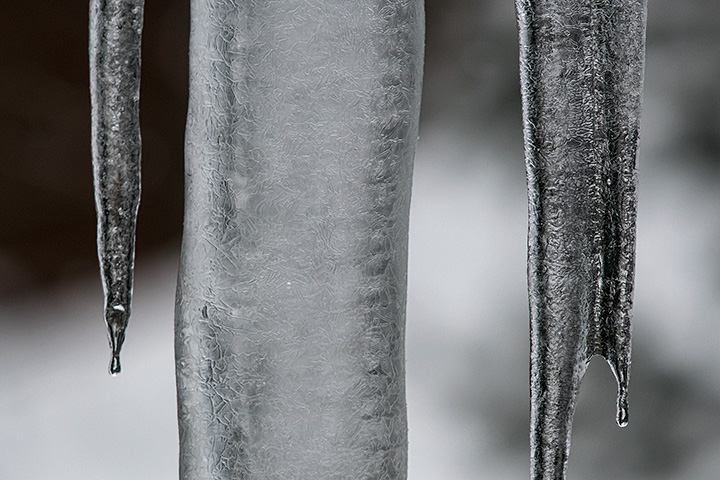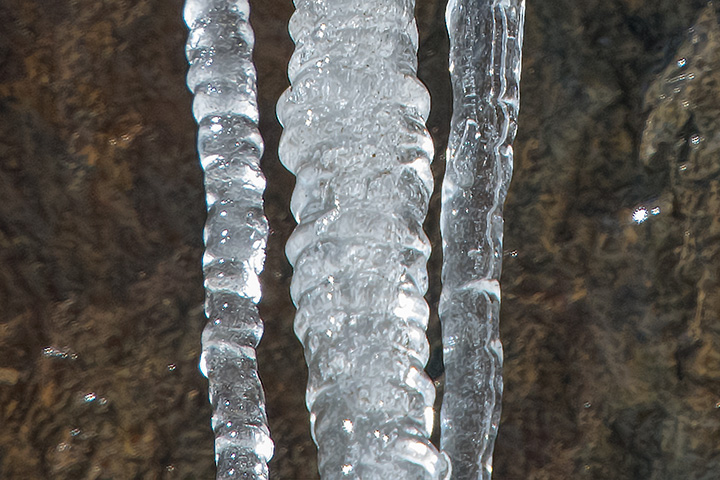With the (inept) proclamation in the media that yesterday was the first day of spring, icicles would seem to be an inopportune topic. Yet, sometimes a natural phenomenon festers for years before treatment. Such is the case with icicles.
Icicles were a winter staple of my childhood home (elevation ~1060 m) in Rossland. That was in an era that preceded modern home insulation, so heat leaking through the roof in sub-zero weather resulted in abundant icicles. Indeed, my father broke his back in a fall from a ladder while trying to clear icicles from our home.
The origin, growth, tapered shape, and many features of icicles provide a rich cabinet of curiosities. These are worthy of many postings, so more may appear in subsequent years. The topic for the moment is the ripples that may grace the sides of icicles.
The odd thing is that sometimes icicles have remarkably smooth sides; yet, sometimes they display ripples which, strangely, all have a wavelength of about a centimetre. Now, I cannot explain why these ripples arise. However, as a result of a study by Chen and Morris of the University of Toronto (On the origin and evolution of icicle ripples), I can say what causes them: salt. Salt is an ionic solute: It separates into ions upon dissolution. I can only guess why this might produce ripples in icicles.
These icicles have smooth sides indicating that the water flowing to them from the roof is pure.

These icicles show prominent ripples suggesting the presence of an ionic solute, such as salt. They formed in the wilderness from the natural drainage off the face of a cliff.

